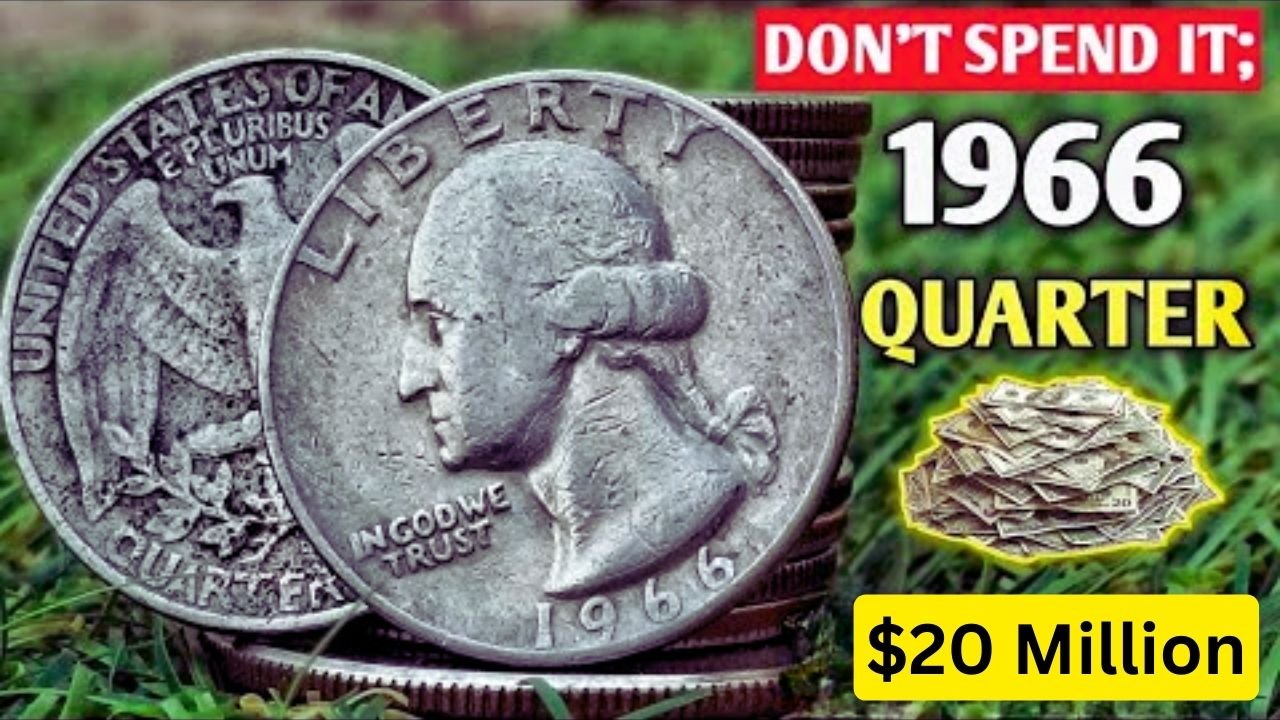Imagine finding a quarter in your pocket worth $20 million. That’s the buzz around a rare 1966 Washington quarter that has collectors and everyday folks checking their change. This coin, used for small purchases decades ago, might be hiding in a jar or wallet. Its value comes from unique mistakes made during production at the mint. With people excited about the chance to strike it rich, here’s what makes this quarter special, how to spot it, and what to do if you find one.
Why Is This Quarter So Valuable?
In 1966, the U.S. Mint switched quarters from silver to a copper-nickel mix. Most of these coins are worth just 25 cents today. But a few were struck on the wrong metal, like silver, or have errors like double images. These mistakes are super rare, making them a big deal for collectors. Experts say a perfect example with these errors could sell for up to $20 million at auction. Similar coins, like a 1933 Double Eagle, have gone for millions, so the hype is real. The rarity and demand drive the price sky-high.
What to Look For
To find this treasure, check your 1966 quarters closely.
Look for a double image on the date, the word “LIBERTY,” or George Washington’s face, called a double die error.
A blurry or overlapped look is a clue.
The coin might also weigh more if it’s on a silver base instead of copper-nickel.
Silver ones have a solid silver edge, not a coppery one.
Use a magnifying glass to spot these details.
Don’t clean the coin, as that can lower its value. If it looks odd, take it to a coin expert for a check.
Key Features of a Valuable 1966 Quarter
Here’s a quick guide to what makes a 1966 quarter stand out. These traits can point to a big payday if confirmed by a professional.
| Feature | Description |
|---|---|
| Double Die | Blurry or doubled date, text, or portrait |
| Silver Planchet | Solid silver edge, heavier than normal |
| Off-Center Strike | Design shifted off the coin’s center |
| Missing Clad | Dull, coppery look without nickel layer |
How These Coins Got Out
Mint errors happen when machines mess up or workers use the wrong materials. In 1966, during the switch from silver to clad coins, some quarters slipped through with mistakes. These could have been spent like regular change, landing in cash registers or piggy banks. Stories of rare coins found in everyday places, like vending machines or old jars, keep the hunt alive. That’s why people are digging through their collections, hoping to spot a life-changing quarter.
What to Do If You Find One
If you think you’ve got a rare 1966 quarter, handle it carefully.
Put it in a soft holder to keep it safe.
Take it to a trusted coin dealer or grading service like PCGS or NGC to verify it.
They’ll check its condition and authenticity.
A pristine coin with a confirmed error could fetch thousands or even millions at auction.
Selling through a dealer or auction house is the best way to cash in. The market for rare coins is hot, with collectors ready to pay big for unique finds.
Payment Potential
The $20 million estimate is for a coin in perfect shape with rare errors, like a silver strike or clear double die. Even lesser errors, like an off-center design, can be worth hundreds or thousands. Here’s what different errors might bring.
| Error Type | Estimated Value |
|---|---|
| Silver Planchet | Up to $20 million |
| Double Die | $1,000–$50,000 |
| Off-Center | $100–$500 |
| Missing Clad | $200–$1,000 |
The Hunt Is On
The idea of a $20 million quarter has sparked a frenzy. People are checking change, old coin rolls, and family heirlooms. Online groups are buzzing with tips and stories of finds. Even if you don’t hit the jackpot, other 1966 quarters with smaller errors can still bring in cash. Coin collecting is more than a hobby now; it’s a treasure hunt. So, grab a magnifying glass and look at those quarters. You might just find a coin that changes your life.
